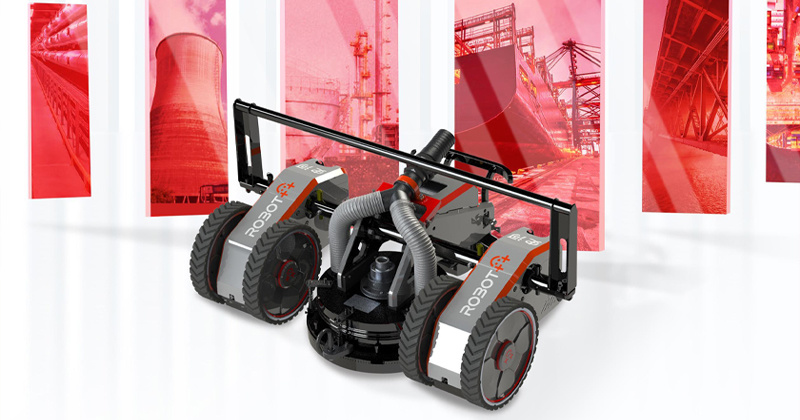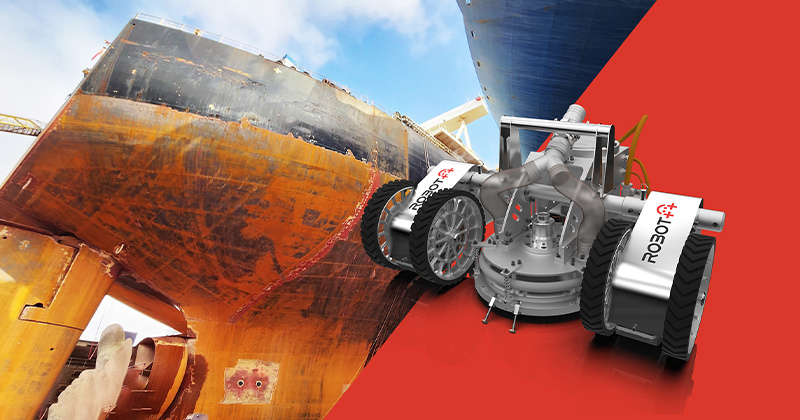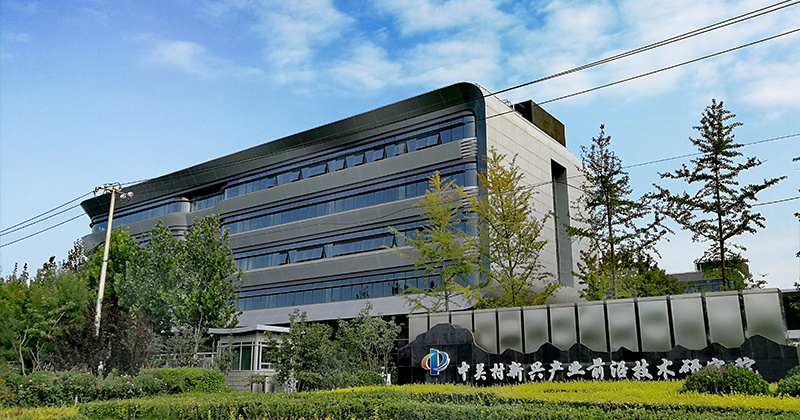Revolutionizing Play: The Future of Petrochemical Sandblasting Robots in Toy Manufacturing
Revolutionizing Play: The Future of Petrochemical Sandblasting Robots in Toy Manufacturing Table of Contents 1. Introduction to the Toy Manufacturing Landscape 2. Understanding Petrochemical Sandblasting Robots 3. The Role of Robotics in Toy Manufacturing 4. Advantages of Using Sandblasting Robots in Manufacturing 4.1 Enhanced Precision and Quality Control 4.2 Increased Production Effi
Jun 03,2025
Revolutionizing Play: The Future of Petrochemical Sandblasting Robots in Toy Manufacturing
Table of Contents
1. Introduction to the Toy Manufacturing Landscape
2. Understanding Petrochemical Sandblasting Robots
3. The Role of Robotics in Toy Manufacturing
4. Advantages of Using Sandblasting Robots in Manufacturing
4.1 Enhanced Precision and Quality Control
4.2 Increased Production Efficiency
4.3 Cost-Effectiveness in the Long Run
5. Key Features of Modern Sandblasting Robots
6. Future Trends in Toy Manufacturing with Robotics
7. Addressing Common Concerns About Automation
8. Conclusion
9. FAQs
1. Introduction to the Toy Manufacturing Landscape
The toy industry has always been a dynamic sector, evolving with technology and consumer preferences. Today, **the demand for innovative, high-quality toys** is greater than ever. As parents seek out educational and engaging products for their children, manufacturers are compelled to find efficient ways to meet these demands. In this landscape, **petrochemical sandblasting robots** are making waves, transforming the way toys are produced and enhancing the overall quality of the products.
2. Understanding Petrochemical Sandblasting Robots
Petrochemical sandblasting robots are sophisticated machines designed to use **high-precision sandblasting techniques** for surface finishing and material removal. These robots play a crucial role in preparing surfaces for painting, coating, or further processing, ensuring that the final product meets stringent quality standards. By using **petrochemical resources**, these robots can create finely textured finishes on various materials, including plastics and metals commonly used in toy manufacturing.
3. The Role of Robotics in Toy Manufacturing
Robotics in toy manufacturing is not just about automation; it represents a paradigm shift in production techniques. The integration of **robotic systems** allows manufacturers to achieve **higher accuracy, reduce waste, and optimize labor costs**. As the industry moves towards more complex and intricate designs, the role of robotics becomes even more critical.
The application of sandblasting robots streamlines processes that were previously labor-intensive. This technology allows for **quick adjustments** in production lines and facilitates the creation of toys with complex designs and varied textures, catering to diverse consumer preferences.
4. Advantages of Using Sandblasting Robots in Manufacturing
4.1 Enhanced Precision and Quality Control
One of the most significant advantages of incorporating sandblasting robots is the **enhanced precision** they offer. These machines can execute tasks with an accuracy that far surpasses human capabilities. This results in **uniform finishes**, reducing the need for rework and ensuring that every product adheres to the highest quality standards.
Manufacturers can invest in advanced quality control systems that work in tandem with sandblasting robots, ensuring that any anomalies are detected and rectified promptly.
4.2 Increased Production Efficiency
Efficiency is paramount in the competitive toy manufacturing sector. Sandblasting robots can operate continuously without fatigue, significantly increasing output rates. The rapid pace at which these robots can prepare surfaces allows manufacturers to meet **high-volume orders** while maintaining consistent quality. This is particularly beneficial during peak seasons when demand surges.
4.3 Cost-Effectiveness in the Long Run
While the initial investment in sandblasting robots may be substantial, the long-term savings can be significant. **Decreased labor costs**, reduced material waste, and improved production timelines contribute to a lower overall cost of goods sold. As manufacturers scale their operations, the return on investment becomes evident, making automation a financially sound decision.
5. Key Features of Modern Sandblasting Robots
Today's sandblasting robots come equipped with a variety of features designed to maximize their effectiveness in toy manufacturing:
- **Adaptive Learning Capabilities**: These robots can learn from past operations to improve efficiency and precision.
- **Multi-Material Compatibility**: Modern sandblasting robots can work with a range of materials, from plastics to metals, broadening their applicability in the toy sector.
- **User-Friendly Interfaces**: Advanced control systems allow operators to easily program and monitor the robots, reducing downtime and simplifying the production process.
- **Safety Features**: Built-in safety mechanisms ensure that the working environment remains safe for human operators, even when robots are in operation.
6. Future Trends in Toy Manufacturing with Robotics
As the toy manufacturing landscape continues to evolve, several trends are emerging:
- **Customization**: Consumers are increasingly seeking personalized products. Robotic systems can quickly adapt to produce customized toys, allowing manufacturers to meet individual preferences without sacrificing efficiency.
- **Sustainability**: With a growing focus on environmental responsibility, manufacturers are exploring eco-friendly materials and processes. Robotic sandblasting techniques can be optimized to minimize waste and energy consumption, aligning production with sustainability goals.
- **Smart Manufacturing**: The integration of IoT (Internet of Things) technologies into manufacturing processes allows for real-time data analysis and continuous improvement. This trend is set to redefine efficiency and responsiveness in toy manufacturing.
7. Addressing Common Concerns About Automation
While the benefits of sandblasting robots in toy manufacturing are clear, there are concerns regarding automation that must be addressed:
- **Job Displacement**: One of the most common fears regarding automation is job loss. However, the reality is that while some jobs may be replaced, new opportunities in robotics maintenance, programming, and supervisory roles will emerge.
- **Initial Costs**: The investment in robotic systems can be daunting. Manufacturers should consider the long-term savings and efficiencies that can be gained, which often outweigh the upfront costs.
- **Reliability of Technology**: Dependency on robotic systems may raise concerns about breakdowns and repairs. Regular maintenance and updates can mitigate these issues, ensuring that robots operate at peak performance.
8. Conclusion
The integration of petrochemical sandblasting robots in toy manufacturing is a game-changer, offering numerous advantages that enhance production efficiency, quality, and cost-effectiveness. As the industry continues to evolve, embracing these innovations will be crucial for manufacturers striving to stay competitive. The future of play is bright, with robotics paving the way for more engaging, high-quality toys that meet the demands of today’s consumers.
9. FAQs
Q1: What is a petrochemical sandblasting robot?
A petrochemical sandblasting robot is a robotic system that uses high-precision sandblasting techniques for surface finishing. It is designed to prepare materials for further processing, ensuring a high-quality finish.
Q2: How do sandblasting robots improve toy manufacturing?
Sandblasting robots enhance toy manufacturing by increasing precision, boosting production efficiency, and reducing long-term costs through automation.
Q3: Are sandblasting robots suitable for all types of toy materials?
Yes, modern sandblasting robots are compatible with a variety of materials, including plastics and metals, making them versatile for different types of toys.
Q4: What are the future trends in toy manufacturing related to robotics?
Future trends include increased customization, a focus on sustainability, and the adoption of smart manufacturing technologies for real-time data analysis.
Q5: Will automation in toy manufacturing lead to job losses?
While some jobs may be automated, new roles in maintenance, programming, and supervision will likely emerge, offering new opportunities in the industry.














